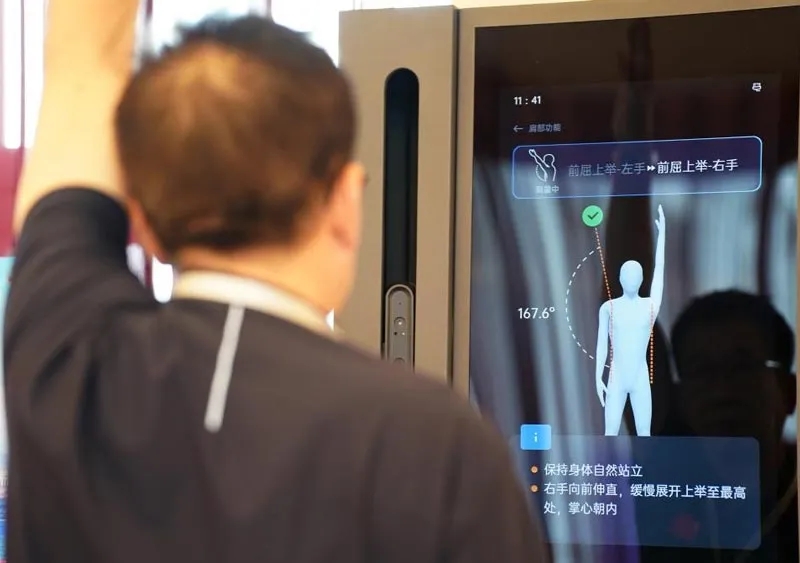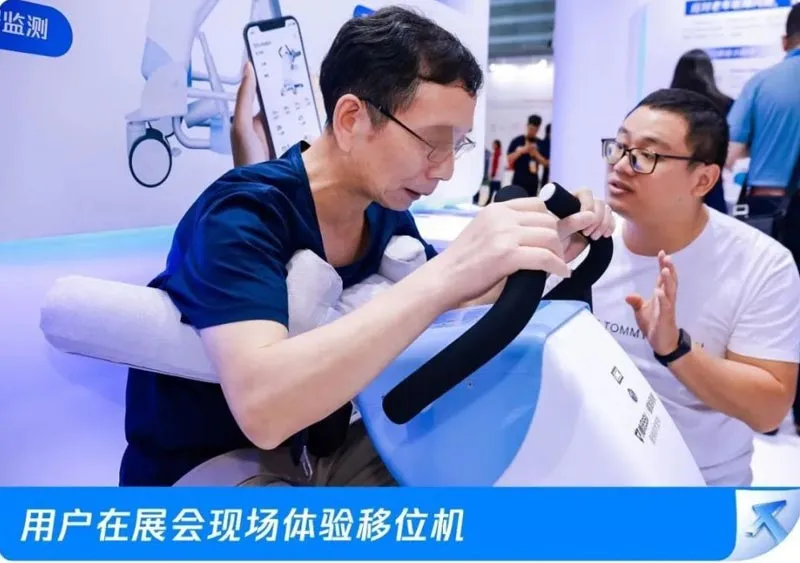China is becoming a super-aged society. The dramatic change of the demographic landscape will shape China’s future economy. From policy to practice, China aims to make its “silver economy” a new economic driving force. However, challenges lie ahead amid the booming economy.
Scarlett Yan
15 July 2024
Arabic version | Chinese version | French version | German version
According to official data, by 2023 China’s total population was 1.41 billion, and those aged 60 or above amounted to 297 million, or 21% of the total population. For those aged 65 or above, the figure was 217 million, accounting for 15.4% of the population.
Meanwhile, China’s demographic landscape is undergoing significant changes. The estimate of scholars and experts is that China’s aging population will increase to about 500 million by 2050, accounting for almost 40% of the total population, and China will enter the stage of a “super-aged society”.
To address the challenge of an increasingly aging society, China’s State Council has unveiled a Guideline at the beginning of 2024 to strengthen the silver economy. The Guideline is the No.1 document issued by the State Council in 2024, which emphasized its significance. In the Guideline, the State Council outlines 26 specific measures across four key areas to promote the development of the silver economy. These measures ranged from improving food and health care services, to developing smart elderly care technologies, as well as improving biotechnologies that help alleviate age-related illnesses.
 A client is experiencing a health monitoring machine at the 9th sports science conference held in Xi’an. (source:Xinhua News Agency)
A client is experiencing a health monitoring machine at the 9th sports science conference held in Xi’an. (source:Xinhua News Agency)
The State Council also suggested building ten industrial parks nationwide focusing on products, services and technologies related to elderly groups, urging efforts to involve industry leaders and to develop potential technology industries.
What is the definition of silver economy in China? A Silver economy refers to an economy that provides services and products focusing on the aging generation.
Unlike other developed countries which have a mature market for aging groups, a silver economy is quite new for China. China believes that a silver economy could be a new driving force for economic growth. Currently, the size of China’s silver economy is about CNY 7 trillion (USD 965 billion), accounting for 6% of its GDP. It is estimated that by 2035 the size of silver economy could grow to about CNY 30 trillion with great potential to increase even further.
Many companies and industry leaders have already plunged into this market. For example, several insurance companies have established elderly care centers in large cities. “Currently, there are nearly 60 elderly care centers of insurance institutions in the market, providing more than 80 000 beds in about 20 provinces” according to Xiaofeng HE, Chairman of Dajia insurance group, in an interview with China’s People’s Daily news group.
Unlike the elderly people in developed countries, who tend to choose professional nursing homes when they retire, elderly people in China prefer to stay at home when they retire, thus providing a big opportunity for home-based care-services as well as for products such as smart home devices and new elderly car technologies.
One of the products is a smart assisted lifting machine, designed by Tencent Silver Technology Lab, which helps to lift elderly people from the bed and transfer them to the wheelchair. The product aims to provide indoor lifting and transferring services for severely disabled people, enabling more freedom of movement, thus solving a major problem of elderly care at home.
 A client is experiencing the smart lifting machine. (source:news.qq.com)
A client is experiencing the smart lifting machine. (source:news.qq.com)
Other products include the home care robots and wearable devices with SOS systems, which detect the elderly people’s blood pressure, heart-rates and blood-sugar as well as other vital signs, and alert when the signs are abnormal.
Although the silver economy is developing promisingly, there are big challenges ahead for the elderly generation. One of the challenges is the home care of disabled elderly people. According to the figures released by The National Working Commission on Aging, by 2020, there were more than 42 million disabled elderly people aged over 60 in China, which means one in six elderly people could not take care of themselves. The demand for caregivers is huge and it is estimated that more than 10 million caregivers are needed nationwide to provide services to the disabled group. However, in contrast, there are only 500 000 nursing staff in the market.
 A nursing staff is taking care of an old man.
A nursing staff is taking care of an old man.
The second challenge is the insufficient supply of elderly care products. Although there are more and more smart care products appearing on the market, some products did reach marketization. At present there is no leading brand in elderly-care market.
The third challenge is the consumption needs of elderly people. The elderly have relatively low incomes and, coupled with conservative consumption habits, the elderly generation tend to save rather than consume. Also, the market lacks effective means to activate the consumption potential of the elderly.
Bearing these benefits and challenges in mind, China must find its own way of developing the silver economy.







